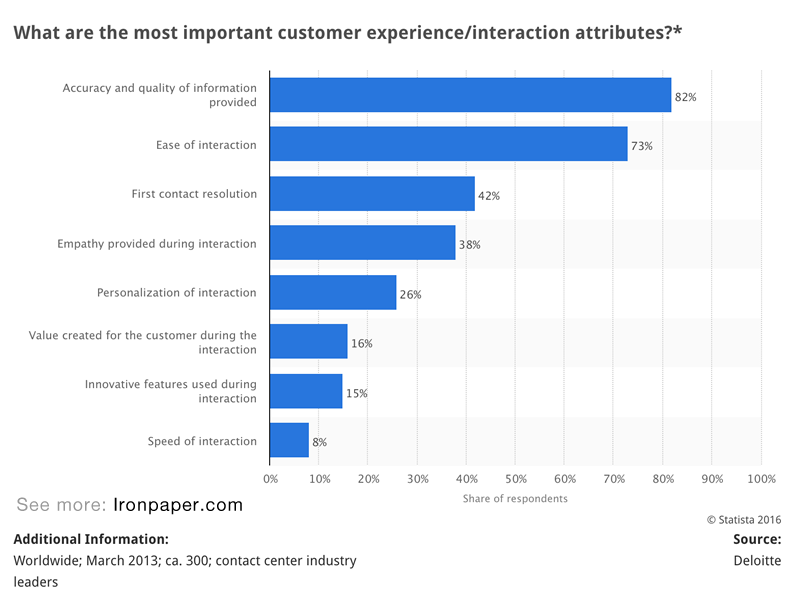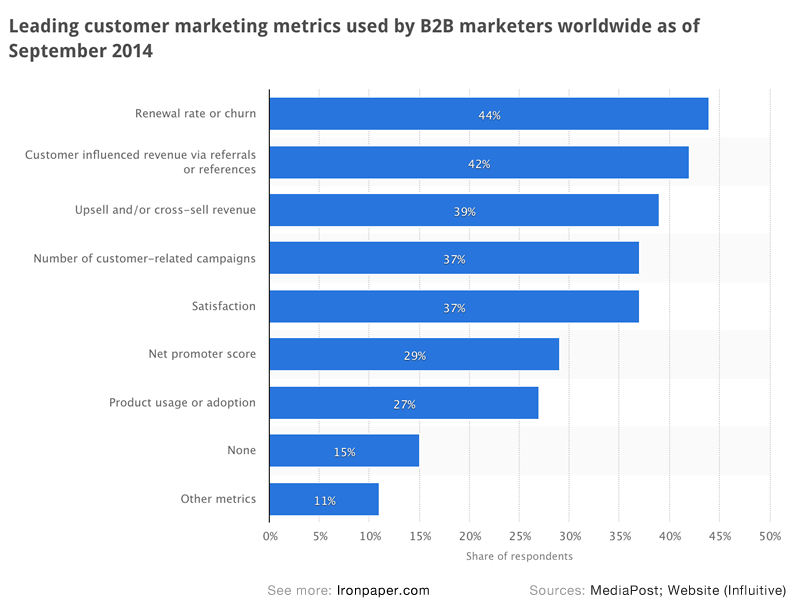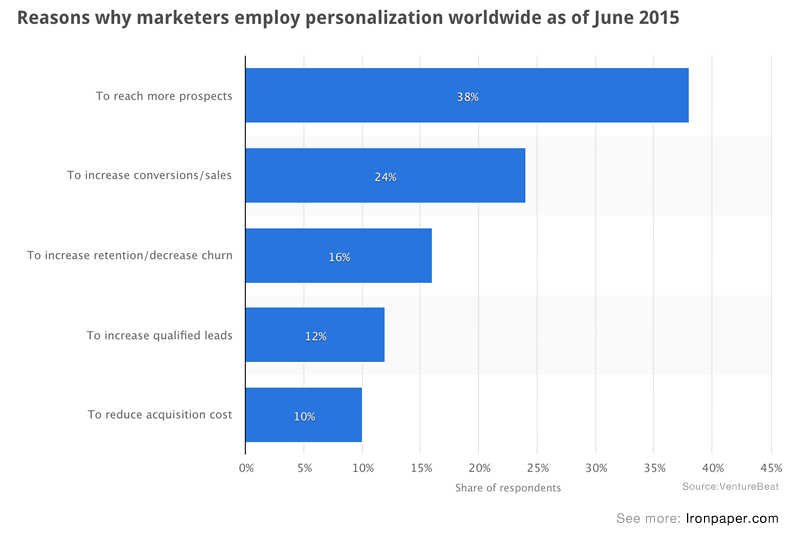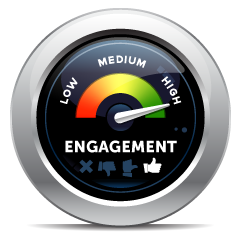
B2B Articles - September 22, 2016
The 20% of your customer base that are loyal customers drive an additional 80% of business. — Gartner
With all the attention paid to lead generation and sales nurturing, it is easy to lose sight of customer retention. The B2B marketer can’t afford to overlook the importance of fostering brand loyalty and developing brand evangelists. When asking “why is customer retention important” there are many factors to consider.

Losing a customer represents many things. These include:
Loss of customer can also mark the beginning of a poor brand reputation, especially in these days of social media spreading communications at a lightning pace.
A customer who has a poor experience will tell an average of 16 other people. — Retail Customer Experience
Of course, a certain level of attrition is to be expected in business. However, with the cost of acquiring new customers at 5 times that of retaining an existing one, it makes sense to expend effort on customer retention too.
At the end of the inbound marketing spectrum sits the word Delight. Ignoring the need to delight the converted B2B buyer on a continuing basis undermines the time and effort put into attracting leads, converting prospects, and closing sales.
47% of customers would take their business to a competitor within a day of experiencing poor customer service. — 24/7
Some customer support can be handled through automated communications or marketing-driven efforts, whereas other customer support needs require more manual attention. Examples of tools and processes to support customers:
A report from Deloitte, below, highlights attributes that communications must aspire to when supporting customers. Accuracy of information, ease of interaction and resolution during the first contact were vital elements in delivering customer happiness. 
Below, a chart of leading customer marketing metrics according to B2B marketers, complied from a report by MediaPost; Website (Influitive). According to the report, 44 percent of B2B marketers used renewal rate or churn to verify the effectiveness of their customer marketing efforts. Although the report is the end of 2014, it holds relevance still.

Try to deliver more educational experiences for your customers. Prevent your emails and communications from merely being transactional. Take time to build education into your customer exchanges--helping them better understand the value, next steps, vision and direction of your solutions.
Research and learn about the customer to better shape experiences tailored to that population. Digging into their preferences and buyer history can inspire content and promotions that reward loyalty more specifically.
At the same time, this research can help bolster buyer persona development and may drive greater understanding of the overall customer journey. Considering the top challenge for digital marketers in Experian’s 2016 Digital Marketer study was “knowing our customers’ needs, wants and attitudes,” this kind of legwork can help develop a deeper customer view.

Instead of seeing customer conversion to a sale as a one-night stand — out of mind once the need is met — focus on long-term relationship building. This can be encouraged with post-purchase communications such as informational emails, targeted follow-ups after the purchase, or promotional and event communications using marketing automation or social selling techniques.
Offering loyalty rewards or referral credits can foster brand evangelists as well. For instance, a point of sale Software as a Service firm might offer a month free to existing customers who refer new customers to the platform.
68% of customers will not go back to a provider once they defect. — Accenture

Tying rewards and loyalty promotions to following the brand’s social channels can help grow the company’s social presence. Drawing attention to informed, authoritative content and offering social-exclusive deals to brand followers will also give customers a reason to keep returning.
For B2B firms, sharing useful and educational content goes a long way. Also consider using social media to build awareness and visibility to knowledge centers, certification programs, tools and informative content.
Figuring out what went wrong can require an investment of time and research. Avoiding this expense is obviously preferable. Yet, if the customer does defect, it can inspire a renewed focus on internal processes and marketing strategy to prevent future losses.
$1.6 trillion is the estimated cost of customers switching due to poor service in the U.S. — Accenture
Customer engagement isn’t an issue only in the B2C sector. B2B marketers, too, can do their part to help business clients keep their customers content.
Sources:
24/7 Customer Engagement Index. (2016). Customer Engagement Index 2016. https://info.247-inc.com/WS-NA-CE-Index-WS.html
Accenture Strategy. (2016). Digital Disconnect in Customer Engagement. https://www.accenture.com/us-en/insight-digital-disconnect-customer-engagement
Charlton, G. (2015, July 3). 21 Ways Online Retailers Can Improve Customer Retention Rates. https://econsultancy.com/blog/11051-21-ways-online-retailers-can-improve-customer-retention-rates
Experian. (2016). The 2016 Digital Marketer. https://www.experian.com/marketing-services/digital-marketer-report.html
Jones, I. (n.d.). The Real Cost of Losing Customers. https://www.thinksales.co.za/the-real-cost-of-losing-customers
Pedersen, A. (2015, April 21). The True Cost of Losing A Customer. https://www.linkedin.com/pulse/true-cost-losing-customer-aaron-pedersen

Tel 212-993-7809
Ironpaper ®
10 East 33rd Street
6th Floor
New York, NY 10016
Map
New York Agency
B2B marketing
B2B Content
Demand generation agency
Digital Marketing
Account-Based Marketing
ABM for SaaS
ABM for energy
Demand generation campaigns
Industry marketing
Privacy Policy
First-party data marketing
SaaS marketing
SEO for B2B
IoT Marketing
B2B Marketing for IoT Companies
HubSpot Agency
B2B Product Marketing
B2B Software Marketing
IoT go-to-market strategy
IT Marketing
HubSpot for ABM
ABM for AI companies
Technology Marketing
Marketing for IT Companies
ABM Campaigns
B2B lead generation
B2B Marketing and Growth Agency.
Grow your B2B business boldly. Ironpaper is a B2B marketing agency. We build growth engines for marketing and sales success. We drive demand generation campaigns, ABM programs, B2B content, sales enablement, qualified leads, and B2B marketing efforts.